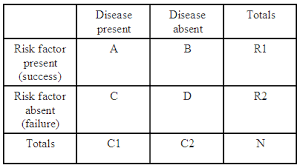 |
| Or Attributable Risk Reduction… |
First let me wish you all a fantastic New Year! Last year was crazy and I think this year is looking like it will be more of the same…
So in a previous post called Risky Business: Is It All Relative? we started talking about risk. We agreed that in lay terms a risk is generally associated with a bad event. However, a risk in statistical terms refers simply to the probability (usually statistical probability value between 0 and 1) that an event will occur, whether it be a good or a bad event.
We also defined the risk of “smartphone thumb” as the number of new cases of smartphone thumb (the outcome) in a given period of time divided by the total number of people who own a smartphone (the exposure) and are at risk. This was called the cumulative incidence or absolute risk. Now what if we wanted to compare this risk to people who did not receive a smartphone for their birthday or Christmas for that matter? Let’s look at the results in a contingency table:
Let’s say 20% of smartphone users develop smartphone thumb whereas only 10% or non-smartphone users do. The RD is then equal to 10% (0.2 – 0.1 *100). The reduction in the chances of experiencing smartphone thumb who own a smartphone is the AR% which in this case is 50% (0.1/0.2*100).

For now, decompress listening to “Under my Thumb” by the Rolling Stones. Classic…
See you in the blogosphere,
Pascal Tyrrell



